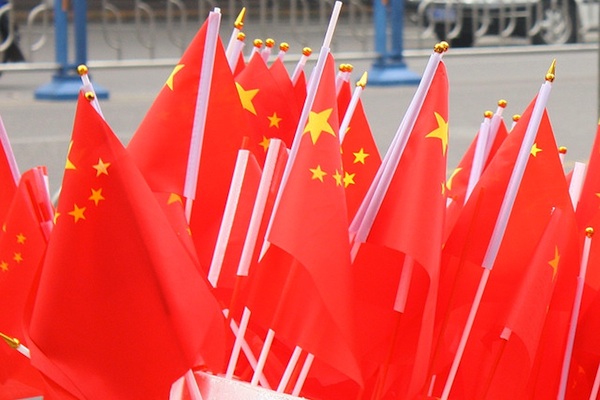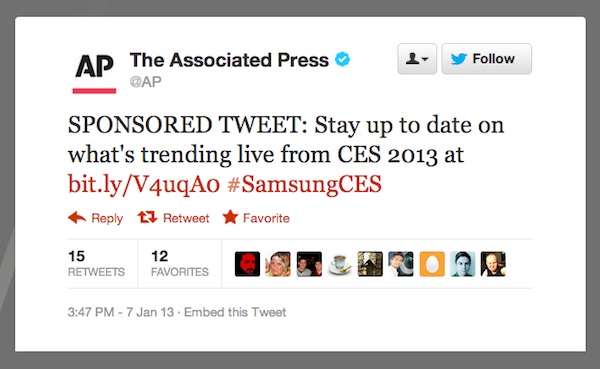

A showdown over censorship in China: China’s press saw a potentially historic flashpoint this week in its struggles over government censorship. The conflict started at the newspaper Southern Weekend, whose journalists were protesting the rewriting of a critical editorial by a government propaganda official, who turned the piece from a call for change to a paean to the political system.
The New York Times and The Guardian have good accounts of what happened next: The newspaper’s journalists posted a letter online calling for the official’s firing, though it was quickly taken down by censors. Their complaints were amplified, though, by a few popular Chinese bloggers, who called for protests outside the newspaper building. Hundreds showed up outside that paper and elsewhere in China, and prominent intellectual and celebrities also voiced their support.
The journalists announced a strike but ultimately reached a deal that allowed them a bit more freedom in exchange for continuing to put out the newspaper, according to The Times. The Times also reported that the revolt had spread to a sister newspaper, the Beijing News, which was forced to write an editorial attacking Southern Weekend. The Wall Street Journal published an anonymous insider account of the turmoil at that paper.
As The New Yorker’s Evan Osnos pointed out, the conflicts were significant enough to prompt the government’s Propaganda Department to send out a secret notice to other Chinese media reiterating that “Party control of the media is an unwavering basic principle.” He and Quartz’s Lily Kuo noted that Chinese journalists typically self-censor, and this was a rare public case of direct government intervention. Said Osnos, “it violated the delicate balance between dignity and control that allows Chinese journalists to go to work every day and feel good about themselves.”
The Daily Beast’s Melinda Liu explained what all this means in the context of new party chief Xi Jinping’s rise to power, and journalism professor Chris Daly looked at the labels journalists were using for the protesting journalists, particularly “liberal.”

A new avenue for sponsored tweets: The Associated Press raised a few eyebrows this week by letting Samsung write sponsored tweets in its Twitter timeline during the International Consumer Electronics Show. Poynter’s Andrew Beaujon grabbed a sampling of the Twitter reaction (which ranged from outrage to indifference). Former Guardian developer Martin Belam objected to the backlash he saw against the deal — and against any specific plan for developing a new business model for online news. At the Lab, Caroline O’Donovan reported that the AP hasn’t seen any significant backlash from its followers, however.
The big question with this move, though, was not about reaction from followers, but about reaction from Twitter. As BuzzFeed’s John Herrman explained, the AP’s deal was a sort of end-run around the AP’s preferred advertising format: Twitter has official Sponsored Tweets that are purchased through its own advertising service, but the AP’s were unofficial, from a deal it struck on its own.
Twitter’s OK with the AP’s sponsored tweets because they’re hand-posted and clearly labeled, but that doesn’t mean Twitter’s crazy about them, either. As Herrman noted, they run close to the type of tweets Twitter has banned in the past, and paidContent’s Mathew Ingram said this type of deal is a clear threat to Twitter’s own advertising plans. Even though Twitter’s service offers vastly superior options to those available with ad hoc deals like the AP’s, Ingram said, “every advertiser that chooses to go the same route as Samsung makes it harder for Twitter to justify using its own in-house program.”
Elsewhere at Twitter, the service announced a new system driving search results for breaking news information — one that uses the human power of Mechanical Turk in addition to the algorithm to give users a quicker, more valuable description of what’s being said regarding breaking news stories and what it means.
GigaOM’s Stacey Higginbotham praised Twitter for knowing when to use the humans in its algorithmic processes, and ReadWrite’s Jon Mitchell argued that Twitter is adding the one key ingredient it was missing as a breaking news source: Context. If Twitter has mastered that, Mitchell asked, what’s the point of other news sites on breaking news? Mitchell said that for himself, the solution to staying relevant was to “write only about ideas that rise from connections that are hard for computers to make.”
But Breaking News’ Cory Bergman countered that Twitter remains a complement to traditional news orgs on breaking news, not a substitute. It still can’t do the verification that news orgs can, he said. Meanwhile, Digiday’s Josh Sternberg talked with Bergman about the challenges of reporting breaking news on Twitter.
Can transparency and objectivity co-exist?: The New York Times’ public editor, Margaret Sullivan, took on that evergreen journalistic debate over objectivity this week with a pair of posts. The first presented transparency (as articulated by Jay Rosen) alongside traditional objectivity and advocating a middle way between the two: Readers, she said, “want reporters to state established truths clearly, without hedging or always putting the words in a source’s mouth. They’re most interested in truth.” The second examined a recent decision at the Times in favor of transparency over objectivity, something she approved of.
Rosen called Sullivan’s column an important marker in the struggle between the two concepts, one that acknowledged the costs of objectivity in terms of the reader’s trust. But veteran political analyst Jeff Greenfield argued at Yahoo that transparency has some pretty significant problems and costs of its own. (Rosen offered a brief counterargument on Facebook.) At paidContent, Mathew Ingram furthered Rosen’s point, stating that transparency is meant to complement rather than replace traditional journalistic values.

Fallout from publishing gun owner data: A few addenda from the controversy during the past few weeks over suburban New York’s Journal News’ publication of public gun records: The New York Times covered the fallout from the map for the Journal News, focusing particularly on the threats to the newspaper’s employees. The Washington Post’s Erik Wemple said the Times story also confirmed that the Journal News map and story were “a slap-dash effort constructed without a great deal of forethought.” Wemple also rebutted the arguments that the report had endangered gun owners. Poynter’s Jeff Sonderman gave some tips for ensuring that public data is published properly.
Meanwhile, Gawker published its own two-and-a-half-year-old list of all the permitted handgun owners in New York City (names, not addresses). While Gawker’s John Cook complained that the New York Police Department didn’t turn addresses over even though they’re public record, Capital New York’s Dana Rubinstein noted that The New York Times sued two years ago for access to exactly those gun permit owners’ addresses.
Reading roundup: A few other stories to watch in this relatively uneventful news-about-news week:
— The pretrial hearing of reported WikiLeaks informant Pfc. Bradley Manning has been going on this week, with prosecutors presenting the revelation that Osama bin Laden requested and received some of the diplomatic cables Manning allegedly leaked. Prosecutors also said Manning would face the same charges if he had leaked to The New York Times rather than WikiLeaks, and The Huffington Post’s Michael Calderone and The Guardian’s Glenn Greenwald both noted that although they’ve distanced themselves from WikiLeaks, traditional news orgs have a stake in this case. The judge also ruled that Manning was mistreated in prison, though he said it wasn’t cause for dismissing the charges.
— The New York Times’ David Carr reported on the surprisingly good year experienced by often-written-off legacy media conglomerates, particularly in TV, and The Atlantic’s Derek Thompson went a little deeper into how TV companies were able to make gobs of money off the Internet, which was thought by many to be its death.
— Adweek’s Janet Stilson wrote an insightful feature on community news sites and why so many of them fail. In response to a community blog shutdown in Chicago, Robert Niles prescribed five steps to take before deciding to pack it in with a community news site.
— Finally, Nick Carr and Clay Shirky (and Wired founding editor Kevin Kelly) had an interesting debate that started about e-readers vs. print and ended up being about music and containers for media content. Start here to see what sparked it, then here to see the rest.
Photo of Chinese flags by Jimmiehomeschoolmom used under a Creative Commons license.